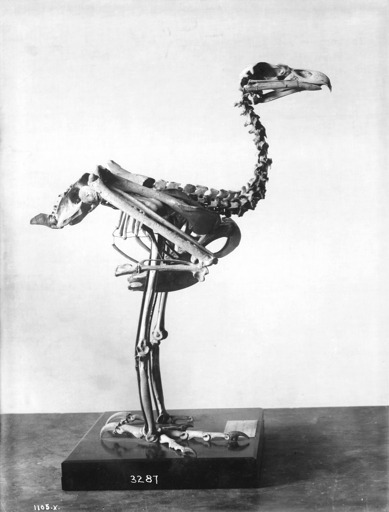Post by blaze on Aug 21, 2014 3:29:13 GMT 5
Some weeks I noticed something weird in Brathwaite (1992), the publication that estimates the weight of Harpagornis at 11.5kg for males and 14.5kg for females. Quote:
How true is the bolded part? I suppose larger animals need longer/larger wings but are the male and female so far apart in size that the female already needs proportionally longer wing bones to support a weight increase of 27% rather the 60% suggested by isometric scaling? He didn't provide evidence that the ulna was only proportionally longer so in lack of more data I don't think isometric scaling or something close to it can be ruled out thus the female could have actually weighted 18.4kg.
But there's more:
His weight estimate was based on comparing an skeleton of an Harpagornis mounted in the Otago Museum with those of two other eagles, he found that it had a torso 1.05 * 1.36 * 1.32 the dimensions of that of a white-bellied sea eagle and 1.26 * 1.73 * 1.58 those of a wedge-tailed eagle. Harpagornis seems to have had a proportionally much deeper and wider torso, being not much greater in length... or did it?

This is the skeleton he measured, let's compare it with other eagle skeletons: 1, 2, 3, 4, 5. IMO it's clear that is badly mounted, with the shoulder girdle too far back in the torso, in the other eagle skeletons measured by Bratwaite (1992) the length of the torso is exactly 2.25 times the width and between 3.3 and 3.5 times the depth if we apply those proportions to the Harpagornis skeleton we get a torso length between ~428mm and ~460mm
Let's take 428mm so now the skeleton is 1.59 * 1.73 * 1.58 times the dimension of the wedge-tailed eagle skeleton, which suggests a volume 4.35 times greater (compared to 3.44 previously), according to the sources given by Brathwaite (1992) the average weight of the wedge-tailed eagle is 3.4kg (Brown and Amadon, 1968), thus the Harpagornis could have weighted 14.8kg meaning that the largest female could have weighted 23.7kg.
Does it seem too heavy? while not necessarily accurate in this case, Campione et al. (2014) equation for theropd body mass gives a mass of 18-19kg to the type specimen of Harpagornis based on its femur circumference of 63.5mm (greater than a dire wolf's) and guess what? the type specimen is only ~1.5% bigger than the average, on average the largest known bones of Harpagornis are 7.4% bigger than those of the type specimen (Holdaway, 1990) which scaled up from the femur circumference estimate results in masses of 22-24kg.
This is certainly not definitive but it gives food for thought.
The longest ulna of Haast's Eagle in Canterbury Museum (AV36405; 279 mm) was 17% longer than that of the Otago Museum skeleton (C40.8). Weight is proportional to the cube root of linear dimensions but the square root of areas. As ulna length is a measure of wing area rather than of body size, body weight should be proportional to the linear measurement cubed divided by the measurement squared. Therefore, the female weight was calculated as male weight x 1.173/2 which gave 11.5 x 1.27 = 14.46 kg for the female.
How true is the bolded part? I suppose larger animals need longer/larger wings but are the male and female so far apart in size that the female already needs proportionally longer wing bones to support a weight increase of 27% rather the 60% suggested by isometric scaling? He didn't provide evidence that the ulna was only proportionally longer so in lack of more data I don't think isometric scaling or something close to it can be ruled out thus the female could have actually weighted 18.4kg.
But there's more:
His weight estimate was based on comparing an skeleton of an Harpagornis mounted in the Otago Museum with those of two other eagles, he found that it had a torso 1.05 * 1.36 * 1.32 the dimensions of that of a white-bellied sea eagle and 1.26 * 1.73 * 1.58 those of a wedge-tailed eagle. Harpagornis seems to have had a proportionally much deeper and wider torso, being not much greater in length... or did it?

This is the skeleton he measured, let's compare it with other eagle skeletons: 1, 2, 3, 4, 5. IMO it's clear that is badly mounted, with the shoulder girdle too far back in the torso, in the other eagle skeletons measured by Bratwaite (1992) the length of the torso is exactly 2.25 times the width and between 3.3 and 3.5 times the depth if we apply those proportions to the Harpagornis skeleton we get a torso length between ~428mm and ~460mm
Let's take 428mm so now the skeleton is 1.59 * 1.73 * 1.58 times the dimension of the wedge-tailed eagle skeleton, which suggests a volume 4.35 times greater (compared to 3.44 previously), according to the sources given by Brathwaite (1992) the average weight of the wedge-tailed eagle is 3.4kg (Brown and Amadon, 1968), thus the Harpagornis could have weighted 14.8kg meaning that the largest female could have weighted 23.7kg.
Does it seem too heavy? while not necessarily accurate in this case, Campione et al. (2014) equation for theropd body mass gives a mass of 18-19kg to the type specimen of Harpagornis based on its femur circumference of 63.5mm (greater than a dire wolf's) and guess what? the type specimen is only ~1.5% bigger than the average, on average the largest known bones of Harpagornis are 7.4% bigger than those of the type specimen (Holdaway, 1990) which scaled up from the femur circumference estimate results in masses of 22-24kg.
This is certainly not definitive but it gives food for thought.








